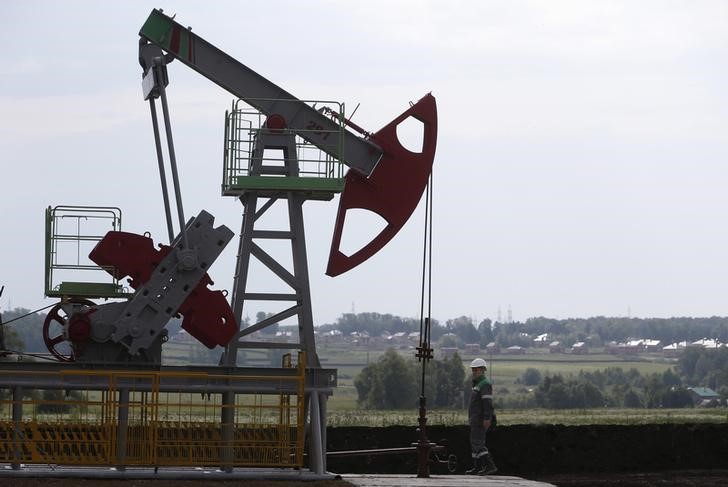© Reuters.
Investing.com — Oil prices retreated Wednesday, continuing to show weakness as traders fretted over the viability of voluntary output cuts by top producers, as well as weakening global demand and growing stocks.
By 09:10 ET (14.10 GMT), the U.S. crude futures traded 2.2% lower at $70.71 a barrel and the contract dropped 1.8% to $75.78 a barrel, with both contracts at their weakest levels since early-July.
OPEC’s voluntary cuts poorly received
The Organization of the Petroleum Exporting Countries and allies, including Russia, a group known as OPEC+, agreed last week output cuts of about 2.2 million barrels a day for early next year.
However, the cuts were deemed voluntary, and this has been greeted with skepticism by the market given the historic failure of many of the group’s members to stick to their allocated production targets.
Saudi and Russian officials added this week that the cuts could be extended or deepened beyond March, but these comments were only added after the initial announcement was poorly received.
U.S. jobs data add to economic concerns
Along with worries that OPEC+ won’t be able to curtail supply levels next year, concerns are growing about cooling global economic activity next year, and thus the associated demand for crude.
Data released earlier Wednesday showed that U.S. growth unexpectedly slowed in November, in another sign that the Federal Reserve’s aggressive campaign of interest rate hikes could be hitting U.S. economic growth.
This follows ratings agency Moody downgraded its credit outlook on China, and flagged increased economic risks to the country from a property market downturn and a lack of government stimulus.
China is the world’s largest oil importer, and has steadily built up its oil inventories this year- a trend that could see the country wind down oil imports in the coming months, especially if economic conditions worsen.
Concerns over China were also coupled with weak economic prints from most major economies. PMI data from Japan, the U.S. and the eurozone largely underwhelmed in November.
Saudi Arabia reduced its official selling price for most of the buyers for January deliveries this week due to subdued oil demand and softer oil prices.
US inventories unexpectedly rise – API
Data from industry group the showed that oil inventories grew 594,000 barrels in the week to Dec 1, compared to expectations for a draw of over 2 million barrels.
The reading, which usually heralds a similar trend in official data later this session, indicated that U.S. inventories likely grew for a seventh straight week, as fuel demand in the country cooled with the winter season.
But the strong build in inventories was also driven by U.S. oil production reaching record highs in recent weeks.
(Ambar Warrick contributed to this article.)
Upgrade your decision-making with InvestingPro+! Using discount code “InvsPro+2023” receive an additional 10% off the InvestingPro+ yearly subscription. Click here and don’t forget the discount code.


